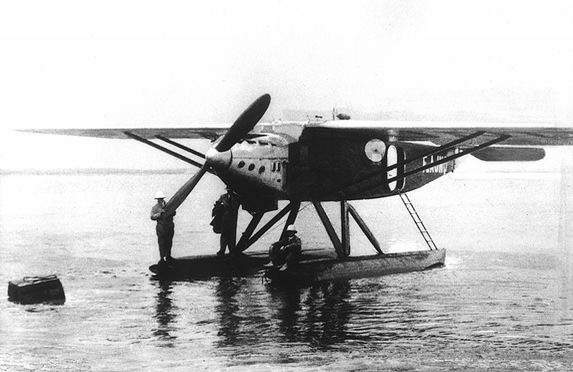
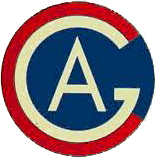
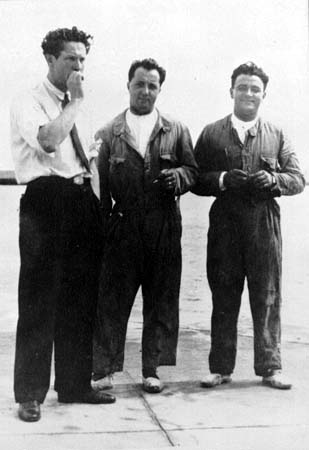
Their airplane, a pontoon-equipped Latécoère 28-3, was carrying 122 kilograms (269 pounds) of mail and fuel for 30 hours of flight. The crew had named the airplane Comte de la Vaulx, after an early French aeronaut and the founder of the Fédération Aéronautique Internationale.
The aviators flew southwest across the South Atlantic Ocean. Natal was approximately 2,000 miles away. [3,178.879 kilometers; 1,975.264 statute miles; 1,716.595 nautical miles]
Gimié transmitted a radio message: “19º Frame-A.J.N.Q. Mermoz, Dabry, Gimié, partis pour Natal à 10 h. 56 locale.” (“19º Frame-A.J.N.Q. Mermoz, Dabry, Gimié, left for Natal at 10:56 a.m., local.”) Gimié was an expert in radio-navigation. The airplane was equipped with radios that could be used to triangulate their position using nine land stations and several ships along their course.
A contemporary United Press wire service news report stated that they arrived at Natal at 6:15 a.m., local time. The actual duration of the flight is difficult to determine. Sources very from as few as 17 hours to as many as 21 hours, 24 minutes. The U.S. Centennial of Flight Commission reported that the flight took 19 hours, 35 minutes.
This was the first non-stop flight to cross the South Atlantic.
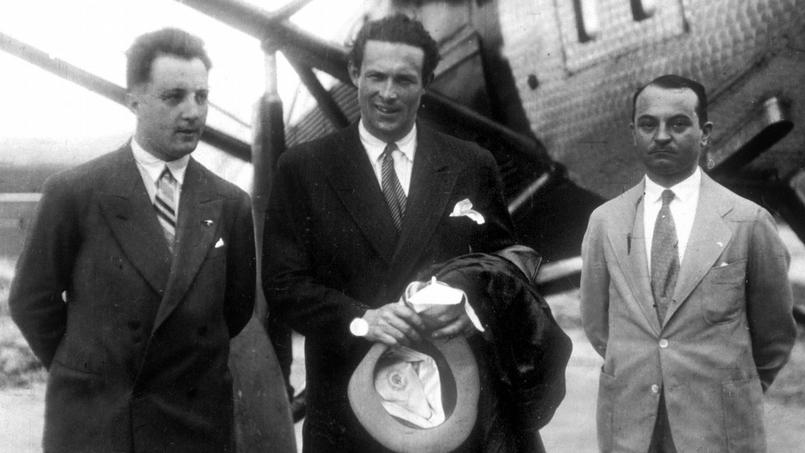
Antoine Saint Exupéry, a fellow Aéropostale pilot, described a portion of Mermoz’s transatlantic flight in Wind, Sand and Stars:
And yet we have all known flights when of a sudden, each for himself, it has seemed to us that we have crossed the border of the world of reality; when, only a couple of hours from port, we have felt ourselves more distant from it than we should feel if we were in India; when there was a premonition of an incursion into a forbidden world whence it was going to be infinitely difficult to return.
Thus, when Mermoz first crossed the South Atlantic in a hydroplane, as day was dying he ran foul of the Black Hole region, ² off Africa. Straight ahead of him were the tails of tornadoes rising minute by minute gradually higher, rising as a wall is built; and then night came down upon these preliminaries and swallowed them up; and when, and hour later, he slipped under the clouds, he came out into a fantastic kingdom.
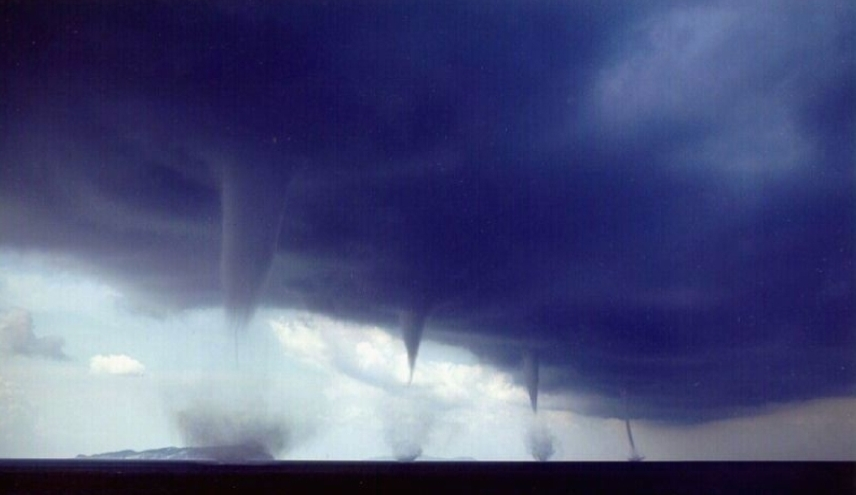
Great black waterspouts had reared themselves seemingly in the immobility of temple pillars. Swollen at their tops, they were supporting the squat and lowering arch of the tempest, but through the rifts in the arch there fell slabs of light and the full moon sent her radiant beams between the pillars down upon the frozen tiles of the sea. Through these uninhabited ruins Mermoz made his way, gliding slantwise from one channel of light to the next, circling round those giant pillars in which there must have rumbled the upsurge of the sea, flying for four hours through these corridors of moonlight toward the exit from the temple. And this spectacle was so overwhelming that only after he had got through the Black Hole did Mermoz awaken to the fact that he had not been afraid.
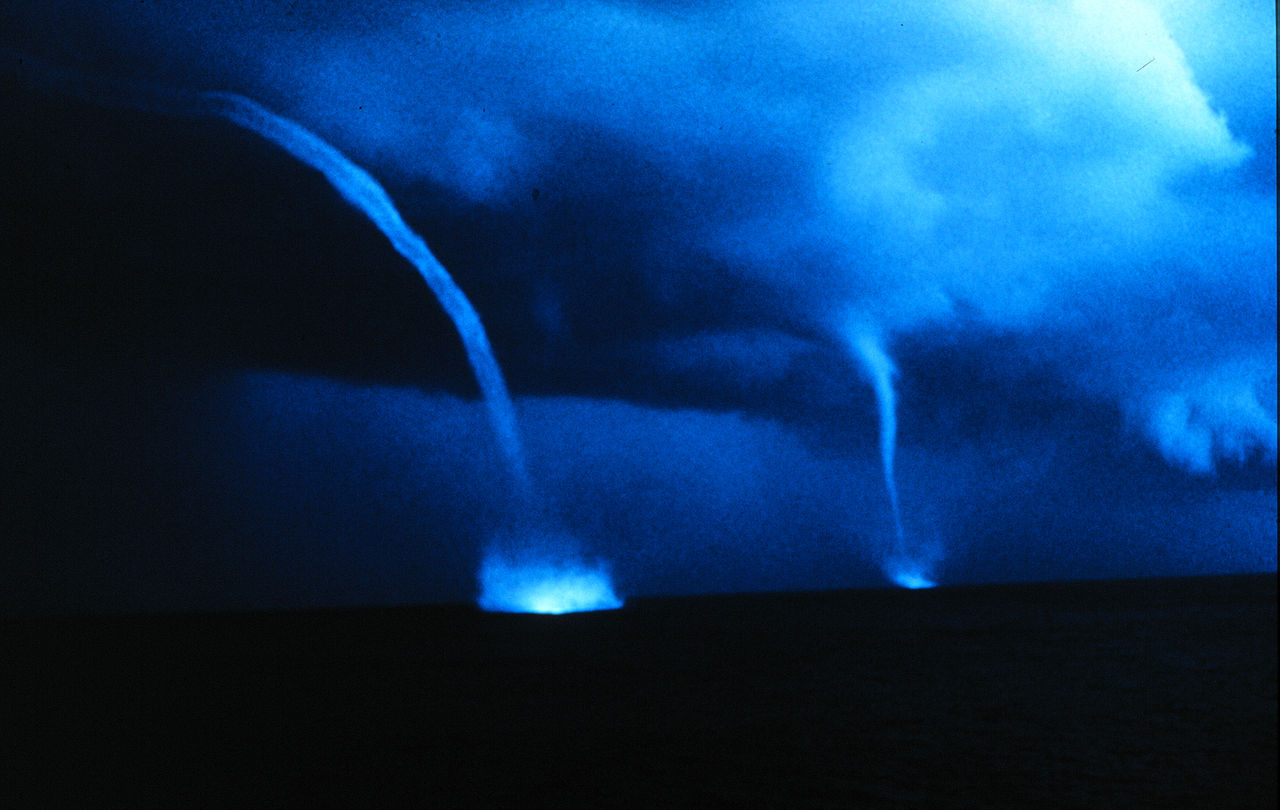
—Wind, Sand and Stars, by Antoine Marie Jean-Baptiste Roger comte de Saint Exupéry, translated by Lewis Galantière, Harcourt Brace & Company, New York, Chapter 1 at Pages 16–17.
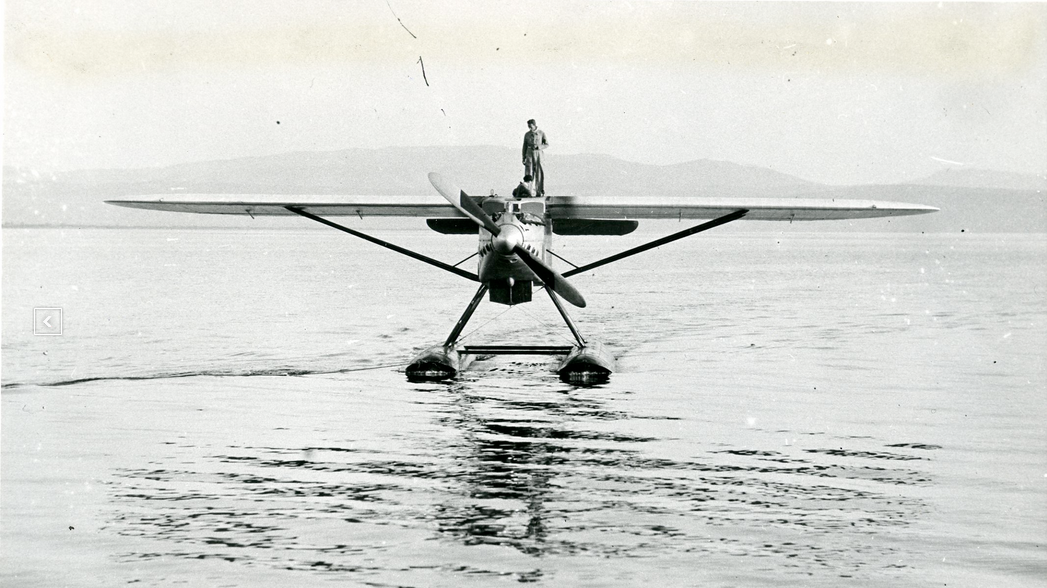

The Latécoère 28-3 was 44 feet, 4 inches (13.513 meters) long with a wingspan of 62 feet, 6 inches (19.050) and height of 10 feet, 7½ inches (3.24 meters).
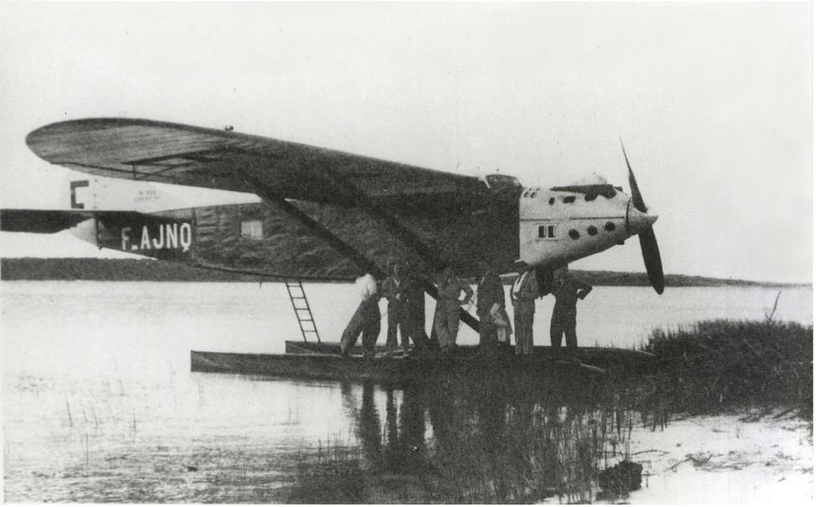
The pontoons were also constructed of Duralumin. Each had ten floatation compartments. They were 26 feet, 4 inches (8.026 meters) long, 4 feet, 5 inches (1.346 meters) wide and 2 feet, 9 inches (0.838 meters) deep.
The Latécoère 28-3 had an empty weight of 5,720 pounds (2595 kilograms), and gross weight of 11,044 pounds (5,010 kilograms). Its fuel capacity was 556 gallons¹ (2,528 liters).
The pilot’s station was an enclosed cockpit at the leading edge of the wing, behind the engine, while the navigator and radio operator were in a cabin below and behind the cockpit. The air mail cargo was placed in a separate compartment.
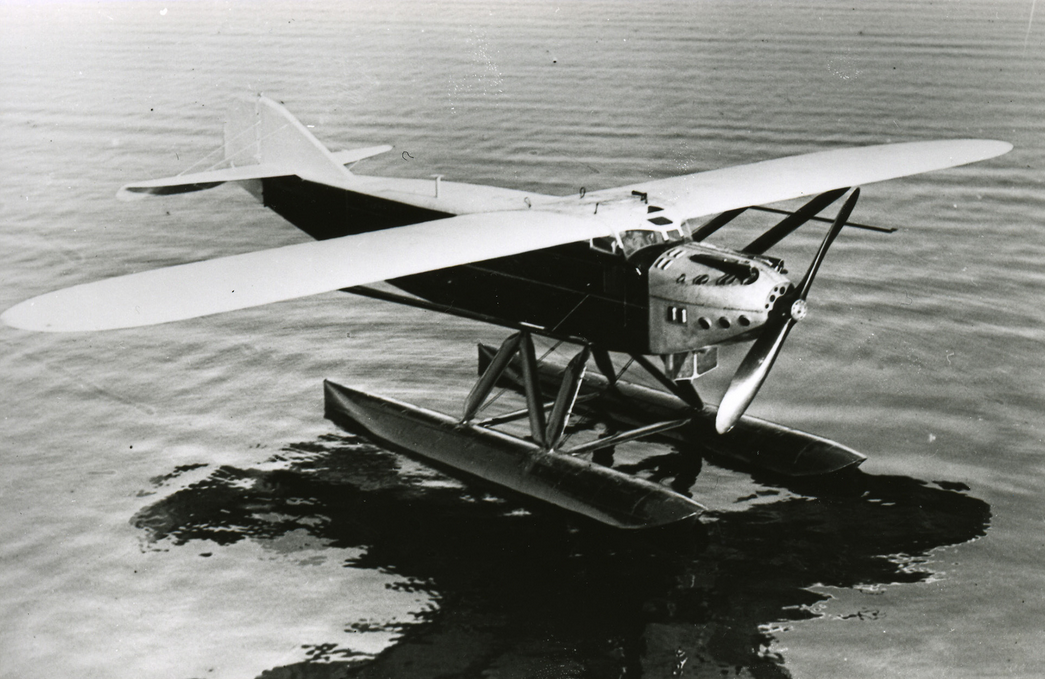
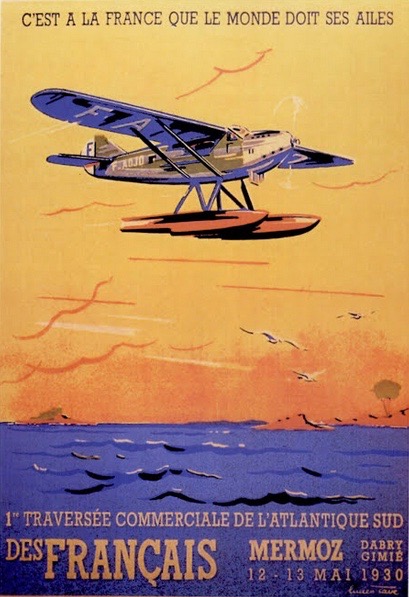
The Latécoère 28-3 was powered by a single right-hand-tractor, water-cooled, normally-aspirated, 31.403 liter (1,916.351 cubic inches) Hispano Suiza 12Lbr single overhead camshaft (SOHC) 60° V-12 engine with a compression ratio of 6.2:1. This engine was rated at 630 cheval vapeur (621.4 horsepower) at 2,000 r.p.m. The two-bladed, fixed-pitch propeller was driven through a gear reduction unit. The 12Lbr was 1.85 meters (6.07 feet) long, 0.75 meters (2.46 feet) wide and 1.02 meters (3.35 feet) high. It weighed 440 kilograms (970 pounds).
The airplane had a maximum speed of 140 miles per hour (225 kilometers per hour). Its service ceiling was 13,000 feet (3,962 meters).
F-AJNQ departed Natal on 8 June for the return flight to Africa. After about 14 hours, the engine developed a serious oil leak. Mermoz made a forced landing near the despatch boat Phocée, approximately 900 kilometers (560 miles) from their destination. The three crew members and the mail were transferred from F-AJNQ to the Phocée. The airplane was set adrift.
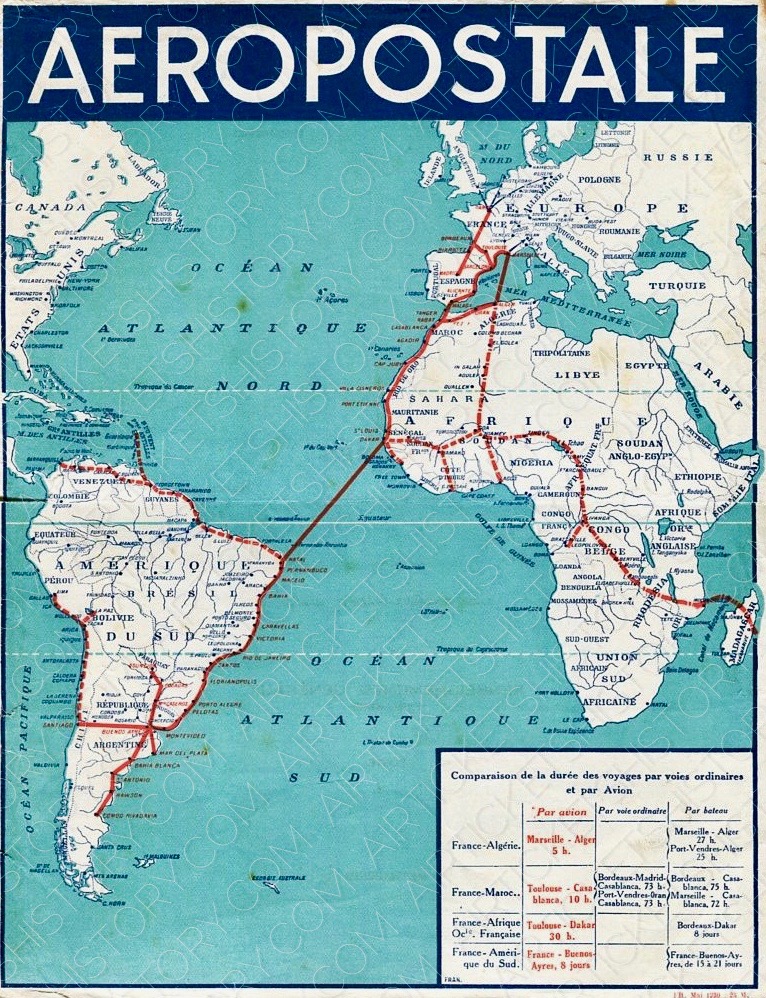
¹ The source of the fuel capacity was a contemporary British periodical. Though not specified, TDiA assumes that the capacity was given in Imperial Gallons.
² The “Black Hole region” refers to “the doldrums” or Intertropical Convergence Zone.
© 2018, Bryan R. Swopes